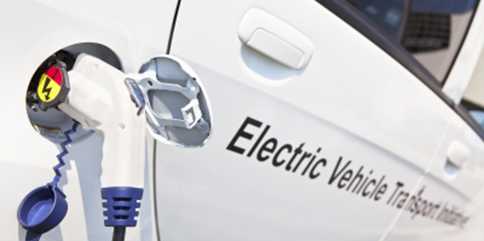e-Mobility – an asset to the smart grid
More and more plug-in electric vehicles are appearing on our streets. This poses new challenges for the electrical grid. However, electric vehicles’ batteries can also be a valuable resource when distribution grids become “smart grids”.
There are different types of plug-in electric vehicles (PEVs), such as plug-in hybrid vehicles, which also have a combustion engine, and pure electric vehicles. With the right electricity-production mix, PEVs can drastically reduce CO2 emissions compared to traditional combustion engine cars, but they still represent a very small percentage of the total passenger car stock at less than 0.1%. However, PEV shares have been increasing in the last several years [1]. In Norway, where policies encourage consumers to purchase PEVs, pure electric vehicles made up 12.5% of the total number of vehicles newly registered in 2014 [2].
From the perspective of the electrical grid, the rising number of PEVs may present a challenge: people’s habits and daily schedules will probably cause peak demand at certain times of day, which may lead to electricity network congestion or voltages below normal.
But PEVs do not simply represent an additional load – they could also add flexibility to the system. Vehicles are typically parked most of the time (more than 90% of the time on average), and the time required to recharge their batteries is generally much shorter than the time they remain parked. Therefore, charging could easily be shifted in time without having a negative impact on the user. Moreover, the energy stored in the vehicles’ batteries could be discharged back to the grid (this is called vehicle-to-grid, or V2G), for example to cover peak demand. The disadvantage of V2G is that it creates additional cycling of the batteries, which also means faster degradation, so users would require some form of compensation for the resulting battery wear. However, further improvements in battery technology, for example new materials (see ETH-News: "Glass for battery electrodes"), would make V2G more attractive. To harness the charging flexibility of PEVs, it is important to use appropriate software and hardware solutions to ensure that drivers’ comfort and privacy are respected.
Trends in the electrical grid
As our energy system becomes increasingly reliant on renewable energy sources, the requirements with regard to the electrical grid are also changing. Solar and wind power are typically non-controllable, decentralized and fluctuating. In Switzerland, electricity production from renewables other than hydro power increased by 40% from 2011 to 2013 [3, 4]. Since electricity demand and supply must be equal at all times, this increase in renewable electricity brings a corresponding need for more flexible resources to keep the power balance in the electrical grid. PEVs could provide short-term storage to compensate for daily fluctuations, whereas other types of storage are needed for longer time frames, for instance to balance seasonal variations.
Another trend is the increased use of communication technologies in the electricity distribution grid, which were previously mostly present in the high-voltage transmission grid. These types of grids with increased communication and control capabilities are called “smart grids”. Smart grids use communication technologies to create a more sustainable and reliable electrical grid by better integrating decentralized resources such as solar panels, wind turbines and batteries.
Therefore, the interaction of PEVs and smart grids creates an interdependence between communication, electricity and transportation networks. This requires a holistic and interdisciplinary approach to conducting research in this area.
Possible uses of charging (and discharging) flexibility
The flexibility of PEVs can help to reduce the costs of network investments over time, and therefore electricity bills, by allowing grid operators to defer investments in the network. For example, operators could wait to replace a heavily loaded transformer. The network has to be big enough to cope with the worst-case loading situation. PEVs can be used to reduce the load peaks, or to absorb excessive solar power generation, thus mitigating extreme loading situations and/or voltage problems. Our research group is currently investigating this issue in the EU-funded project externe SeitePlanGrid EVcall_made.
Grid frequency regulation could also make use of the flexibility provided by PEVs. This service keeps the balance between supply and demand to maintain the system frequency close enough to the nominal value, e.g. 50 Hz in Europe. According to our results from the project externe SeiteTHELMAcall_made, which investigates the impact of electric mobility in Switzerland, PEVs could provide between 35% and 73% of the needed regulation reserves by 2035.
Although the increasing penetration of PEVs could lead to challenges for the electric grid, PEVs can also be used as a valuable resource for the grid, for example to provide frequency regulation or to defer network investments. However, the systems we design to harness the charging (and discharging) flexibility of PEVs should be acceptable for PEV users. Moreover, we need appropriate policies and regulations to foster the participation of flexible loads, such as PEVs, in smart grids.
Further information
[1] Electric Vehicle Initiative, externe SeiteGlobal EV Outlook, 2013call_made.
[2] Norwegian Road Federation (OFV) (January 2015). "Bilsalget i 2014" [Car sales in 2014] (in Norwegian). (Retrieved 14.01.2015)
[3] Swiss Federal Office of Energy, Schweizerische Statistik der erneuerbaren Energien (Swiss Statistics on Renewable Energies) – 2011, 2012 edition. (externe SeitePdfcall_made, in German)
[4] Swiss Federal Office of Energy, Schweizerische Statistik der erneuerbaren Energien (Swiss Statistics on Renewable Energies) – 2013, 2014 edition. (externe SeitePdfcall_made, in German)

